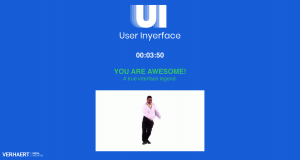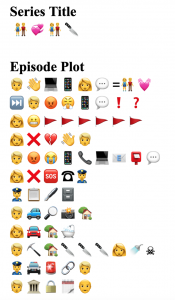As I watched the lecture by Dr. Borditsky on the power of language to shape the way humans think, the following statements resonated with my own personal experience with constructions of language, culture and relativism:
Firstly, Dr Boroditsky discusses several times throughout her lecture how language is a “magical” ability that humans possess and that diversity in language is a testament to the diversity and capabilities of the human mind.
- [0:35-0:47] “language is one of these magical abilities that humans have, we can plant ideas in each-other’s minds using a finite set of words that we recombine into an infinite set of new meanings”
- [45:00-45:20] “The fact that there are so many languages and they differ so much, this linguistic diversity is a real testament to the ingenuity, sophistication and flexibility of the human mind. We are able to invent not one perspective on the world, but 7000 and many more because we are constantly changing, inventing the language and moving in new directions”
I think that this is something important to consider, that although we are wired through culture and relativism to consider language and resulting perspective as something that is static, we should instead consider how language frames what we see and without these constraints the human brain is actually capable of so much more and that languages can actually promote or impede certain abilities (like differentiating a wider variety of colors or counting exact numbers). As a Social Studies teacher, one of the primary skills that we encourage in students is to consider events and ideas from all sorts of different perspectives. Students often have trouble doing this; they can usually identify the perspective of the speaker in a given source, and can often also identify the opposing viewpoint, but struggle to identify any other viewpoints that, for example, agree with parts of the perspective, and disagree with others. There are so many different ways of looking at the historical and contemporary world, but our cultures and language constrain us to look at the world primarily in one way because we “don’t think to dig out of the trench and see what other possibilities are” [44:54-44:58]. Dr Boroditsky elaborates on this idea by highlighting that language actually creates limits to our beliefs about the way the world works and the proper way to go about doing things:
- [44:30-44:50] “cultures reduce cognitive entropy… we are able to think about the world and conceptualize it in many different ways, but we don’t always do all of those different ways, we just do things in the ways that we are used to doing them.”
This is an interesting dichotomy, where language proves that the human brain is infinitely dynamic and flexible, yet it also constrains us to a specific cultural worldview. In this way, language is a really strong demonstrator of how culture frames the way that individuals see the world and is a reflection of what different societies prioritize and deem to be important.
- [32:35-32:40] “Speakers of different languages witness exactly the same event, but come away remembering different things about this event”
Many Indigenous groups hold traditions that reflect the belief that nature should be regarded with deep respect, and that nature is inseparable from place and belonging. The Yupik language reflects this in that there are 40-50 different words for various forms of snow, a reflection of the importance of snow for Inuit society. Alternatively, Borodistky explains that the English speakers emphasize time, demonstrating the value and emphasis that Western societies put on time.
After graduating from my undergrad, I moved to Cairo, Egypt to teach at an International School. Over the two years that I spent in Cairo, immersing myself in the language and way of life, the more I came to see this same idea that language is a reflection of culture and world view. My biggest pet peeve while living in Egypt was what we referred to as “Egyptian time”, a concept that is familiar in many hot climates around the world. As a Westerner who is very time oriented, it drove me up the wall to be told something would be done right away and have it be completed weeks later, or that someone would be around to pick me up at 9:00PM and arrive at 11:00PM. Over time I came to understand how to interpret what was being said differently, based on the cultural environment, where the exact words being said were not the focus, but the culturally contextualized meaning behind the words. Boroditsky refers to this phenomenon by studying how teaching people different metaphors for time impacts how they think and speak about time.
- [18:00-18:30] “When you teach people to talk a new way, you are teaching them to think a new way”
Language speakers, then learn to prioritize values based on the value of words in their language. By expanding knowledge of different languages then, humans are able to expand their understanding of what is valuable or important. By this interpretation, I would agree with Charlemagne and Charles V, who note that learning more than one language has the capability of giving one person the knowledge and wisdom of many.
- [8:28-8:35] “To have a second language is to have a second soul” – Charlemagne, Holy Roman Emperor
- [8:38-8:40] “A man who knows four languages is worth four men” – Charles V, Holy Roman Emperor
Dr. Borditsky’s lecture is an excellent means of promoting learning as many languages as possible, as this would be an incredible means of opening up our minds and means of interpreting our surroundings. I grew up in an English speaking family but attended French Immersion schooling from kindergarten to grade 12. The thing that I most noticed about learning French is that I began to associate grammatical gender with objects that I was interacting with. This was actually an interesting experience for me as I never particularly excelled with French grammar or remembering which gender was associated with which object. Even to this day when speaking or writing in French, I need to look at objects and think to myself, “does that chair look more like a girl or a boy?”. This is objectively ridiculous, in that a chair does not have a gender, but miraculously enough, my brain is most often able to search the annals of my primary school mind to find the gender the French language has associated with the chair. Boroditsky notes that in this way, genders become more meaningful for cultures that place linguistic emphasis on gender. I wonder then how the transition to a more genderless world will be reflected in societies which place so much importance on gender.
- [23:48- 23:55] “People have done a lot of studies looking at how people perceive and think about objects based on a grammatical gender.”
Though I don’t often make use of my French anymore, I have found it to be useful in my travels, and have often found myself thinking that it would be a great superpower to be able to speak many languages fluently. Particularly in Egypt, but also while traveling in other parts of the world I have thought about how much easier it would be to get around, complete transitions and make friends if I could somehow be blessed with the gift of language and be able to speak fluently with people all over the world. This lecture has encouraged me to extend that thought to include how knowing many different languages would not only allow me to communicate more broadly, but also to see the world in a more diversified way, to see it from the perspective of people who speak all sorts of different languages and have all sorts of different worldviews.
- [45:25-45:50] “[Think] about linguistic diversity as an aspiration; [think] about how you can think about things differently, all of the things your mind can do.”
References
SAR School for Advanced Research. (2017, June 7). Lera Boroditsky, How the languages we speak shape the ways we think. YouTube. Retrieved January 17, 2023, from https://youtu.be/iGuuHwbuQOg







